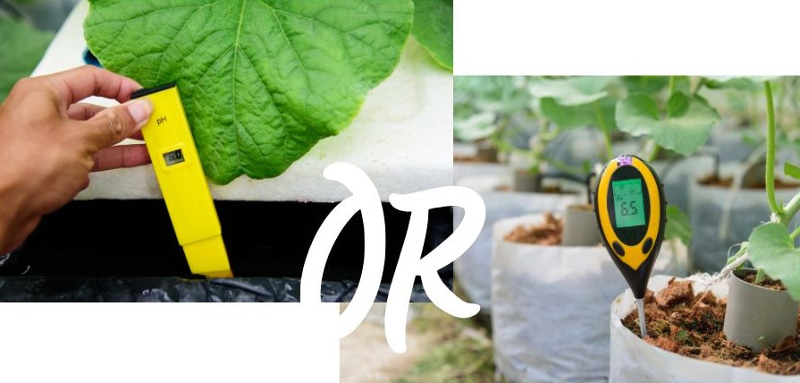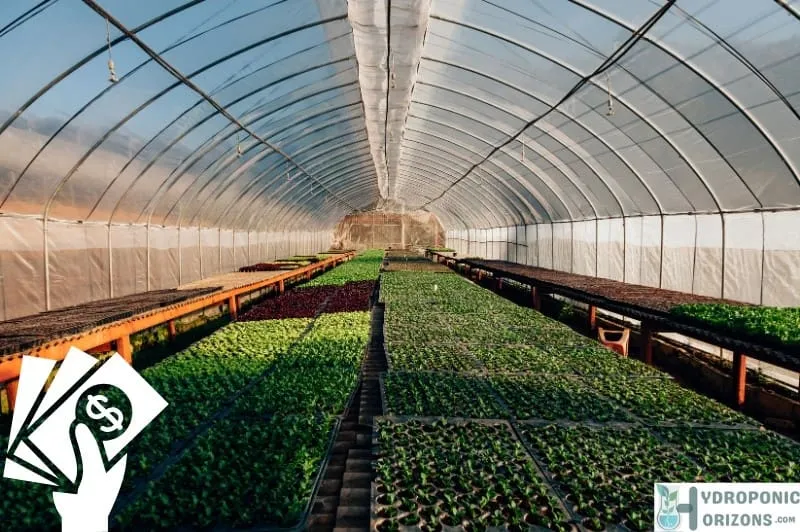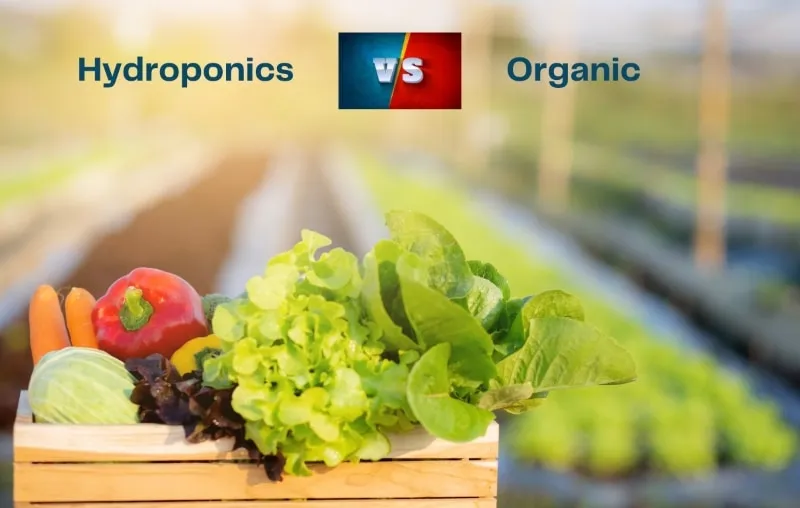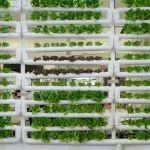Are you interested in starting your own hydroponic garden but not sure where to begin? While indoor hydroponics may be a popular choice, did you know that you can also grow a thriving hydroponic garden outdoors?
Setting up your outdoor hydroponic garden may seem like a daunting task, but with a little research and planning, you can create the perfect haven for your plants to thrive. Plus, with the year-round growth potential of hydroponic gardening, you’ll soon be enjoying a continuous supply of fresh, homegrown produce.
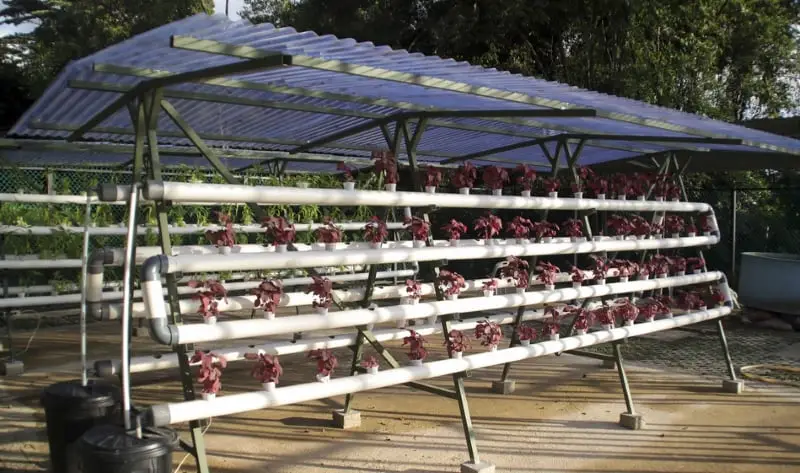
In this article, we’ll provide a simple guide to help you get started with outdoor hydroponic gardening. We’ll cover everything from choosing the right location and components to selecting the best plants for your garden and adapting to seasonal changes. So, whether you’re a seasoned gardener or a beginner, get ready to discover the benefits and advantages of growing your hydroponic garden in the great outdoors.
- Outdoor Hydroponic Garden Overview
- Choosing The Right Location For An Outdoor Hydroponic Garden
- Basic Components of an Outdoor Hydroponic Garden
- Best Plants for Outdoor Hydroponics
- Benefits and Advantages of Outdoor Hydroponic Gardens Vs Indoor Hydroponic Gardens
- Types of Outdoor Hydroponic Systems
- Starting and Maintaining an Outdoor Hydroponic Garden
- Potential Problems and Solutions For Your Outdoor Hydroponics Growing System
- Best Practices For Adapting To Seasonal Changes And Climate Variations
Outdoor Hydroponic Garden Overview
If you’re considering starting an outdoor hydroponic garden, you’re in for an efficient and innovative gardening experience. Hydroponic systems allow you to grow your plants without soil, utilizing a nutrient-rich water solution instead. This method offers numerous benefits, including faster growth and less maintenance compared to traditional soil-based gardens.
Outdoor hydroponic gardens provide access to natural sunlight, a cheaper and more accessible light source compared to costly grow lights for indoor systems. Plus, having your hydroponic system outdoors gives you more space and flexibility when it comes to choosing the plants you want to grow. Let’s dive deeper into the possibilities of growing hydroponics outside.
Can You Grow Hydroponics Outside?
Yes, you can grow hydroponics outside, and many gardeners do so successfully. By setting up your hydroponic system outdoors, you take advantage of the natural light and temperature fluctuations, which can help your plants thrive in certain conditions. However, this also means you will have to monitor and adjust your system more carefully to accommodate weather changes and maintain optimal growing conditions.
A shady spot is essential for your outdoor hydroponic system, especially for the reservoir. Keeping it away from direct sunlight helps maintain proper water temperature, prevents evaporation, and prevents algae growth. In the case of high-heat days, you can add cold water or ice to the reservoir to keep it cool or consider investing in a water chiller for better efficiency.
While setting up your outdoor hydroponic garden, it is important to choose the right hydroponic system for your needs. Some commonly used systems suitable for the outdoors include the drip and ebb and flow systems.
Choosing The Right Location For An Outdoor Hydroponic Garden
When planning an outdoor hydroponic garden, selecting the ideal location is crucial. Factors such as sunlight, fresh water sources, and drainage play a significant role in ensuring a successful garden. Let’s discuss different aspects to consider when choosing the right location for your outdoor hydroponic garden.
Outdoor Hydroponics In Hot Weather
In hot weather, you should consider placing your garden in a location that offers some shade, especially during the hottest part of the day. This can help prevent excessive evaporation and keep your plants’ roots cooler, which is essential for optimal growth. If possible, choose a spot near a water source for easy replenishment of your system. Remember to regularly check the nutrient levels in the water, as high evaporation rates may cause imbalances.
Outdoor Hydroponics In Winter
In colder climates, select a location with good sun exposure to benefit from natural heat and light. Ensure that you have proper insulation for your hydroponic system and protect it from frost to prevent damage to your plants. You can use a greenhouse or cloche to provide additional protection and warmth during the winter months. Keep an eye on water temperature and consider using heaters if needed.
Related: What is the best temperature for hydroponics? Find out!
Can You Grow Hydroponics In The Shade?
Do hydroponic plants need direct sunlight? No, you can grow hydroponics in the shade; however, you’ll need to select shade-tolerant plants or adjust their light requirements with supplemental lighting. Choose a location that receives bright, indirect light, which is still beneficial for plant growth. If using an outdoor vertical hydroponic garden or an outdoor hydroponic wall garden, you can take advantage of limited space and enhance light exposure.
Does Rain Affect Outdoor Hydroponics?
Rain can affect outdoor hydroponics, primarily by altering nutrient levels and pH in your system. Heavy rainfall can dilute your nutrient solution, making it necessary to monitor and adjust as needed. To minimize these issues, consider placing your hydroponic setup under a sheltered area or using a cover to protect it from direct rainfall.
Basic Components of an Outdoor Hydroponic Garden
Creating an outdoor hydroponic garden allows you to grow plants without soil, using nutrient-rich water instead. To set up a successful garden, you’ll need to know about the critical components that make it work. In this section, we’ll cover growth medium choices, water and nutrient solution, lighting options, and several types of hydroponic systems.
Growth Medium Choices
Unlike traditional gardens, hydroponic gardens use an alternative to soil for supporting plant roots. Some popular growth media options include:
- Perlite: A lightweight, porous volcanic rock that promotes excellent root aeration and drainage.
- Clay pebbles: Also known as LECA (Lightweight Expanded Clay Aggregate), these round-shaped pebbles provide excellent drainage and aeration while also being reusable.
- Gravel: An affordable and widely available growth medium that provides good aeration but may need additional support for plants with larger root systems.
Water and Nutrient Solution
Outdoor hydroponic gardens depend on a balanced nutrient solution to provide their plants with the necessary nutrients. In these gardens, the water reservoir stores the nutrient-rich water, which is then delivered to the plants using a water pump and timer system.
It’s essential to maintain the nutrient solution’s pH and temperature for optimal plant growth. Investing in a water cooler will help regulate the water temperature, especially on hot days, while a water heater will do the job in clod climates.
Lighting Options
Sunlight is the primary light source for outdoor hydroponic gardens, just like traditional gardens. Make sure to set up your garden in a spot that gets plenty of natural sunlight. However, you may need to use supplemental lighting, such as grow lights, during overcast days or when your garden requires additional light intensity.
Related: For more information on the components that go into any kind of hydroponic system, read our article on a hydroponics basic setup.
Best Plants for Outdoor Hydroponics
Choosing the right plants for your outdoor hydroponic garden can make a significant difference in its success. To help you, here are some of the best plants that thrive in hydroponic systems outdoors.
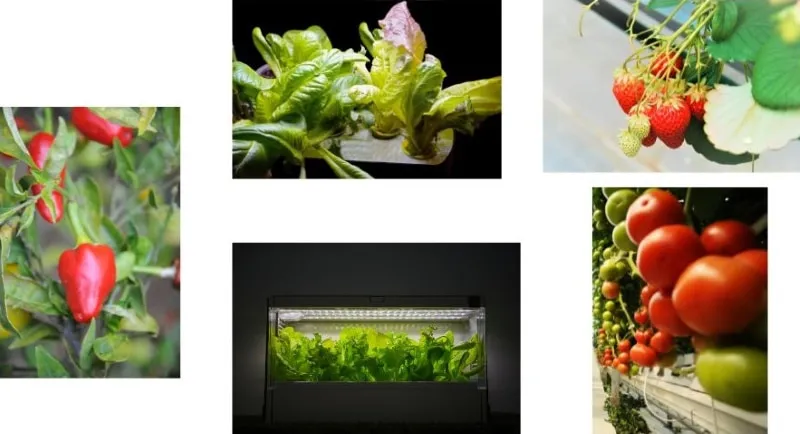
Leafy Greens: Greens such as lettuce, spinach, and kale are perfect choices for your outdoor hydroponic garden. They do exceptionally well in these setups and grow rather quickly, allowing you to enjoy fresh, healthy greens regularly.
Herbs: Herbs like basil, parsley, and mint are natural fits for hydroponics, making it simple for you to grow your own flavorful herbs at home. Since they can be grown in small spaces, you could easily add different herbs to your garden.
Tomatoes: Tomatoes are a popular choice for hydroponic gardens due to their fast growth and plentiful yield. Outdoor hydroponics allows tomatoes to access natural sunlight, which helps to enhance their flavor and nutritional value.
Strawberries: These sweet berries are a delight when grown hydroponically, as they can produce an abundance of fruit in a small space, making them a perfect choice for a vertical garden setup. With your hydroponic garden outdoors, you can enjoy fresh strawberries throughout the growing season.
Hot Peppers: For those who like a bit of spice, hot peppers do well in outdoor hydroponic systems. Because they require ample airflow and sunlight, an outdoor setup helps maximize their growth and flavor.
Benefits and Advantages of Outdoor Hydroponic Gardens Vs Indoor Hydroponic Gardens
- Natural sunlight: One of the most significant benefits of outdoor hydroponic gardening is access to natural sunlight. This means you don’t have to rely on artificial lighting, which can be costly and may not provide the same spectrum of light as the sun. Natural sunlight is also beneficial for plant growth, as it provides a full spectrum of light that is essential for photosynthesis.
- Larger growing area: Outdoor hydroponic gardens offer a larger growing area than indoor gardens. This means you can grow more plants and larger varieties of plants, such as fruit trees or grapevines. With more outdoor space, you can experiment with different hydroponic systems and plant configurations.
- Lower energy costs: Since outdoor hydroponic gardens use natural sunlight, they require less energy than indoor gardens. This can translate to lower energy costs and a more eco-friendly approach to gardening. This makes hydroponics more cost-effective in the long run. This is part of what you should take into account when calculating a potential hydroponic profit margin.
- Reduced pest and disease risk: While outdoor hydroponic gardens are more exposed to pests, they are easier to get rid of compared to indoor gardens. This is because outdoor gardens have natural predators, such as ladybugs and birds, that can help control pest populations. Additionally, outdoor gardens have better air circulation than an indoor space, which can help prevent the spread of diseases.
- Greater sense of connection to nature: Many gardeners enjoy the benefits of being outside in the fresh air and sunshine while tending to their plants. Outdoor hydroponic gardening allows for a greater sense of connection to nature and can provide a more enjoyable and fulfilling gardening experience.
Overall, both indoor and outdoor hydroponic gardens have their advantages and disadvantages, and the choice between them will depend on personal preferences and gardening goals.
Types of Outdoor Hydroponic Systems
When creating your outdoor hydroponic garden, it’s essential to understand the different types of systems available to choose one that best suits your needs. While any hydroponic system can be used in the great outdoors, drip, aeroponic, or flood-and-drain systems are the most efficient. Avoid using a deep water culture system since external temperature swings are difficult to regulate and might potentially harm your plants.
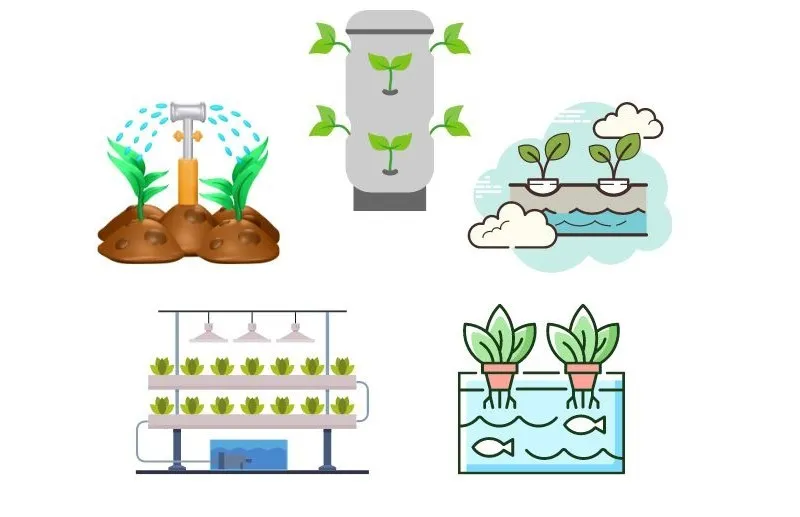
Drip
The drip system is a popular choice for outdoor hydroponic gardens due to its simplicity and versatility. In this method, nutrient-rich water is dripped directly onto the roots of your plants, providing them with the necessary nutrients for growth. The excess water is then collected in a reservoir and recycled for further use. This system works well for various plant types, and you can easily scale and modify it to fit your outdoor space.
Ebb and Flow
Also known as the flood and drain system, the Ebb and Flow method involves periodically flooding a shallow tray filled with plants and growing media with nutrient solution, which then drains back into a reservoir. This technique ensures that your plants are supplied with both essential nutrients and oxygen. It’s an excellent option for growing leafy greens or herbs in your outdoor hydroponic garden.
Aeroponics
Aeroponics involves growing plants in a mist or fog environment without using any soil or other media. The plant roots are suspended in air and are misted with nutrient-rich water to provide them with the necessary nutrients. Aeroponics is a highly efficient system as it allows for maximum oxygenation and nutrient absorption by the roots, resulting in faster growth and higher yields.
Nutrient Film Technique
This type of system may be used in a greenhouse, inside, or outside. In the Nutrient Film Technique (NFT) system, nutrient-rich water continuously flows through PVC pipes or channels, forming a thin film. Your plants are placed in small net pots along the channels, allowing their roots to absorb nutrients from the water film. NFT systems are suitable for growing small plants with shallow root systems such as leafy greens and herbs.
Aquaponics
Aquaponics, on the other hand, combines hydroponic and aquaculture systems, where fish are raised in a water tank and their waste is used as a nutrient source for the plants. The plants, in turn, filter the water and provide a clean environment for the fish. This closed-loop system is highly sustainable and can produce both fish and vegetables in the same system.
Starting and Maintaining an Outdoor Hydroponic Garden
Starting your outdoor hydroponic corner is an exciting venture that allows you to grow veggies and plants without soil. To begin, first gather all the necessary supplies, including a reservoir, growing tray, and seedling tray for your seedlings. You’ll also need a supplementary lighting system if your garden in a shaded area.
Begin by setting up your growing trays in a suitable outdoor location, ensuring there’s ample space for your seedlings and adequate sunlight. Then, select the vegetables you’d like to grow. Hydroponics works well for most vegetables, but root vegetables might be more challenging in this setup. Try focusing on leafy greens, herbs, and other non-root vegetables for a successful garden.
Transfer your seedlings into the growing trays after gently rinsing the roots in lukewarm water and monitor their growth regularly.
To maintain your outdoor hydroponic system, it’s essential to monitor the nutrient solution and water levels regularly. Replenish the water and nutrients as needed to support the growth of your plants. Keep an eye on the pH level of the solution and adjust it accordingly to maintain a healthy growing environment.
A well-maintained system will help your plants thrive, so be sure to check for any signs of pests or diseases, and address any issues as they arise. With careful attention and proper care, your backyard hydroponic garden will reward you with fresh, homegrown vegetables for you and your family to enjoy.
Potential Problems and Solutions For Your Outdoor Hydroponics Growing System
When setting up an outdoor hydroponic garden, you may face some challenges. However, with the right knowledge and solutions, you can overcome these issues and enjoy a thriving garden.
Power and Pumps: You may worry about using hydroponics without electricity or a pump. While some systems require constant water and nutrient delivery, wick and Deep Water Culture (DWC) systems don’t need a pump. For an electricity-free garden, consider using solar power or a gravity-fed system to supply water and nutrients.
Pests and Diseases: Pest infestations and diseases like powdery mildew can harm your hydroponic plants. To prevent these issues, regularly inspect your garden, remove affected plants, and use organic, eco-friendly pest control methods or natural predators like ladybugs. For disease prevention, maintain proper air circulation and cleanliness in your garden.
Nutrients and pH: Your plants need the right balance of nutrients and a proper pH level to thrive. Common nutrient deficiencies include potassium, nitrogen, and calcium. Regularly check and adjust the pH levels, and choose high-quality hydroponic nutrients to avoid deficiencies.
Weeds and Unwanted Plants: Although not as big of a problem as in soil gardening, weeds can compete for resources and negatively affect your hydroponic garden. To keep them under control, remove weeds by hand or use a non-toxic weed barrier on your garden’s perimeter.
Water-related issues: Issues like salt burn, root rot, and algae growth can occur due to improper water management in your hydroponics system. Keep your water clean by flushing and cleaning the system regularly, and monitor water temperature to maintain appropriate oxygen levels.
Environments and Light: A key aspect of successful outdoor hydroponics is managing sunlight and shade. While your plants need sun, they also require some shade, especially in hot weather. Add shade structures or plant your hydroponic system in an area with a mix of sun and shade.
Quality of seeds: Starting with high-quality seeds or seedlings can significantly improve yield and overall plant health.
Adequate space: Proper spacing between plants is critical for maximizing yields. Follow recommended spacing guidelines for the specific crops you are growing.
Taking these measures to address potential problems will help you maintain a healthy, flourishing outdoor hydroponic garden without unnecessary stress.
Best Practices For Adapting To Seasonal Changes And Climate Variations

- Choose weather-resistant crops: Select crops that can withstand variations in temperature, humidity, and precipitation.
- Use shading and cooling techniques: During hot summer months, shading techniques such as using shade cloth or installing trellises can help protect plants from excessive heat. Cooling techniques such as misting or installing fans can also be used to regulate temperature.
- Use insulation: During colder months, using insulation can help protect the hydroponic system from freezing temperatures.
- Adjust nutrient and water levels: During periods of high heat or drought, plants may require additional water and nutrients to compensate for increased evaporation and transpiration rates.
- Cover the hydroponic system: Using a cover such as a greenhouse or hoop house can help regulate temperature, humidity, and precipitation, allowing for year-round growing.
- Monitor weather conditions: Regularly monitoring weather conditions can help growers prepare for and adapt to seasonal changes and climate variations.
By implementing these best practices, growers can successfully adapt their outdoor hydroponic garden to seasonal changes and climate variations and maximize crop production year-round.

